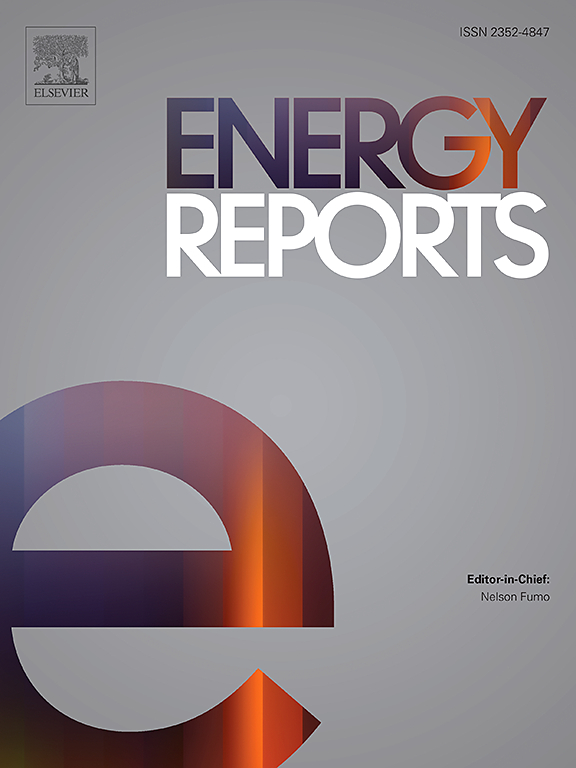工业能源效率的障碍、驱动因素和实践:摩洛哥最大工业中心的实证研究
IF 5.1
3区 工程技术
Q2 ENERGY & FUELS
引用次数: 0
摘要
本研究首次对摩洛哥的工业能效采用进行了实证分析,重点关注卡萨布兰卡——该国的主要工业中心,占全国能源消耗的21. %。基于对15个工业区39家企业的结构化问卷调查和访谈,本研究确定、排名并分析了影响能效实施的主要障碍、驱动因素、实践和信息来源。调查结果显示,财务和行为障碍最为严重,46% 受访者认为“资本投资的其他优先事项”是主要制约因素。相比之下,69.2 %的受访者认为成本降低是最大的驱动因素。电力能效措施的采用率(平均得分:0.60)高于热能能效措施(0.46)。广泛实施的电气解决方案,如高效照明(0.78)和功率因数校正(0.72),与先进的热技术,如节能器和自动排污控制的有限采用形成对比,由于技术和资金限制,这些技术仍未得到充分利用。Cronbach的alpha测试证实了很强的信度:障碍为0.90,司机为0.93,信息源为0.85。企业对专家咨询顾问、审计人员和当地能源效率机构的信任度较高,而媒体和会议等一般渠道的价值较低。与其他国家类似研究的比较分析揭示了共同的挑战和摩洛哥特有的动态。本研究为政策制定者、行业领导者和研究人员提供了可操作的见解,建议有针对性的金融工具、监管更新、能力建设和实时监测,以使工业实践与可持续发展目标7和13以及非洲联盟的《2063年议程》保持一致。本文章由计算机程序翻译,如有差异,请以英文原文为准。
Barriers, drivers, and practices of industrial energy efficiency: An empirical study in Morocco’s largest industrial hub
This study presents the first empirical analysis of industrial energy efficiency adoption in Morocco, focusing on Casablanca—the country’s primary industrial hub, accounting for 21 % of national energy consumption. Based on a structured questionnaire and interviews with 39 firms across 15 industrial zones, the research identifies, ranks, and analyzes the key barriers, drivers, practices, and information sources influencing energy efficiency implementation. Findings show that financial and behavioral barriers are most significant, with 46 % of respondents identifying “other priorities for capital investments” as a major constraint. In contrast, 69.2 % cited cost reduction as the strongest driver. Adoption levels are higher for electrical energy efficiency measures (average score: 0.60) than for thermal ones (0.46). Widely implemented electrical solutions such as efficient lighting (0.78) and power factor correction (0.72) contrast with the limited uptake of advanced thermal technologies like economizers and automatic blowdown control, which remain underused due to technical and financial constraints. Cronbach’s alpha tests confirmed strong reliability: 0.90 for barriers, 0.93 for drivers, and 0.85 for information sources. Firms showed high reliance on expert advice—consultants, auditors, and the local agency for energy efficiency were the most trusted sources—while general channels like media and conferences were less valued. Comparative analysis with similar studies from other countries reveals both shared challenges and Morocco-specific dynamics. This study offers actionable insights for policymakers, industry leaders, and researchers, recommending targeted financial tools, regulatory updates, capacity building, and real-time monitoring to align industrial practices with SDGs 7 and 13 and the African Union’s Agenda 2063.
求助全文
通过发布文献求助,成功后即可免费获取论文全文。
去求助
来源期刊

Energy Reports
Energy-General Energy
CiteScore
8.20
自引率
13.50%
发文量
2608
审稿时长
38 days
期刊介绍:
Energy Reports is a new online multidisciplinary open access journal which focuses on publishing new research in the area of Energy with a rapid review and publication time. Energy Reports will be open to direct submissions and also to submissions from other Elsevier Energy journals, whose Editors have determined that Energy Reports would be a better fit.
 求助内容:
求助内容: 应助结果提醒方式:
应助结果提醒方式:


